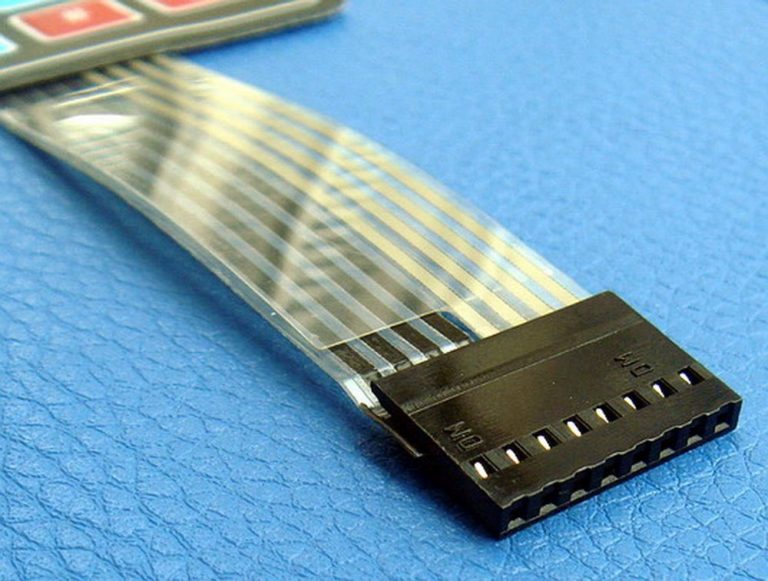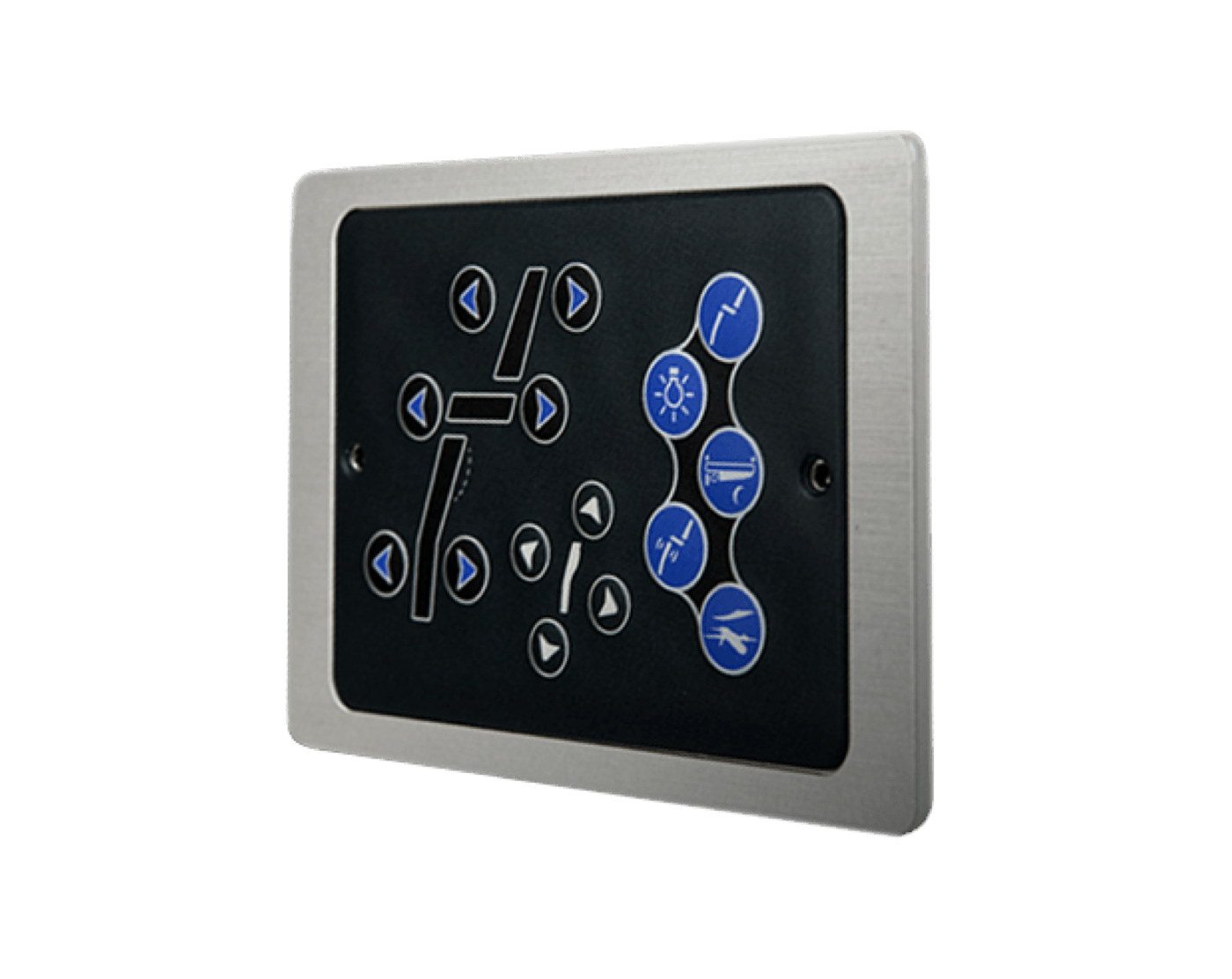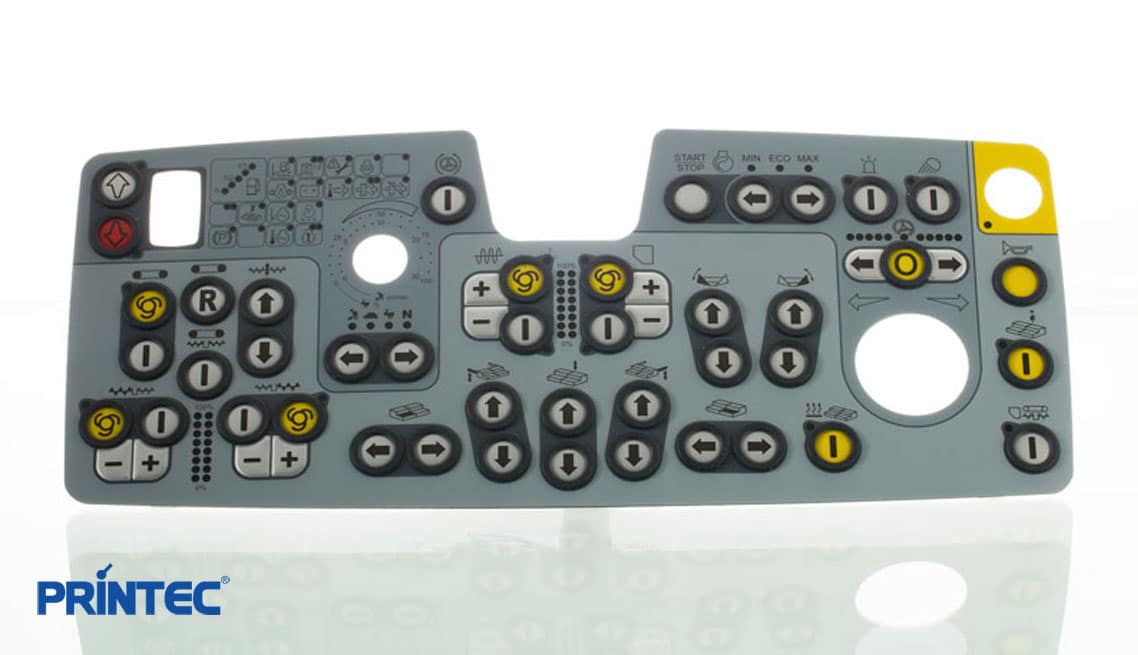All Concerning Membrane Switch: Understanding Its Design and Performance
When you consider the control interfaces in modern devices, membrane layer switches often enter your mind. These parts are extra than just switches; they blend design and capability perfectly. Understanding exactly how they function and what makes them effective can change your perspective on daily electronics. There are nuances to their design and performance that you could not be mindful of. Allow's explore what collections membrane layer switches over besides various other control systems.
What Are Membrane Layer Switches?

Membrane switches can likewise be tailored concerning form, size, and graphics, enabling producers to produce one-of-a-kind interfaces customized to certain items. On the whole, membrane layer switches play a substantial role in enhancing user experience across a broad array of applications.
Just How Membrane Changes Work
When you press a secret on a membrane button, it turns on a straightforward yet efficient mechanism. The top layer, typically constructed from versatile product, pushes down onto a conductive layer under it. This action bridges the void between conductive traces, finishing an electrical circuit. As quickly as the circuit shuts, it sends a signal to the tool's controller, which translates your input.
You'll observe that the tactile responses varies based on the button layout, offering either a soft click or a more obvious response. When you release the secret, the membrane go back to its original setting, reopening the circuit and stopping the signal. This procedure takes place virtually instantly, making sure a responsive user experience.
Membrane buttons are preferred because of their longevity and resistance to dirt and wetness, making them excellent for various applications, from household home appliances to clinical tools. Recognizing this procedure aids you value their prevalent use.
Secret Elements of Membrane Switches
Comprehending the crucial parts of membrane layer switches is fundamental for grasping their capability and layout. At the core, you'll find the visuals overlay, which supplies the visual interface for individuals. Below that, there's a spacer layer that divides the circuit layers, guaranteeing that they don't make call until pushed. The circuit layer is where the magic takes place; it includes conductive traces that complete the circuit when you push the switch. An additional important aspect is the sticky support, enabling the switch to comply with surface areas firmly. The protective layer guards versus ecological elements and wear, expanding the button's life expectancy. Each component plays a significant duty in making certain reputable performance and customer interaction. By understanding these parts, you'll acquire insight right into how membrane layer switches over operate and their importance in numerous applications.
Materials Made Use Of in Membrane Switch Over Design
The efficiency and sturdiness of membrane layer switches greatly rely on the materials made use of in their design. You generally run into polyester and polycarbonate as primary substratums as a result More Help of their superb toughness and versatility. These products resist scratches and chemicals, making them excellent for requiring atmospheres.
The conductive layers often use silver or carbon, picked for their reliability and conductivity. membrane switch manufacturer. Silver offers remarkable performance, while carbon is an affordable choice. For the overlay, you might think about a matte or shiny finish, relying on your aesthetic needs and individual experience
Make certain to select adhesives that endure environmental variables like temperature and humidity. Picking the appropriate products will assure your membrane layer button stands the test of time.
Layout Considerations for Membrane Switches
While making membrane buttons, it's vital to take into account numerous factors that affect their functionality and user experience. Begin by focusing on the layout and switch size; make specific they're user-friendly and easy to browse.
Verify your style accommodates environmental factors, like wetness or temperature variations, which can impact efficiency. By thoroughly thinking about these aspects, you'll develop a membrane switch that boosts use and contentment.
Applications of Membrane Layer Switches
Membrane switches are functional components located in various applications, from commercial devices to customer electronics. You'll see their influence in equipments that call for long lasting interfaces and in devices that take advantage of streamlined designs. Understanding these applications helps you value the performance and functionality of membrane buttons in daily modern technology.
Industrial Devices Usage
When you're seeking to boost the performance of industrial tools, membrane switches use a trusted service that integrates longevity with user-friendly style. These buttons are excellent for severe atmospheres, offering resistance to dirt, moisture, and chemicals. You'll find them in control panels for manufacturing devices, HVAC systems, and medical devices, where accuracy and responsiveness are crucial. Their low account implies they fit flawlessly right into different tools, conserving valuable space while maintaining convenience of usage. With adjustable graphics and backlighting alternatives, you can produce an intuitive user interface for drivers, improving performance and safety. Plus, their long life-span reduces maintenance expenses, making them a smart investment for your industrial applications. Welcome membrane layer buttons to improve your procedures and improve general efficiency.
Consumer Electronic Devices Assimilation
In the domain of consumer electronics, membrane layer switches play a vital role in boosting individual interaction and tool capability. Membrane buttons likewise guarantee sturdiness and resistance to dust and dampness, prolonging the life-span of your electronics. By picking membrane layer switches, you boost not just the functionality yet additionally the style of your tools, making everyday communications smooth and satisfying.
Advantages and Negative Aspects of Membrane Layer Switches
While membrane layer buttons provide a variety of benefits, they likewise come with some drawbacks that you should take into consideration. One significant advantage is their portable style, making them perfect for space-constrained applications.

Membrane buttons can have a much shorter lifespan contrasted to mechanical buttons, particularly under heavy use. They can also be much less tactile, which could impact individual responses throughout operation. Balancing these pros and disadvantages will help you establish if membrane layer switches are the ideal fit for your job.
Frequently Asked Questions
The Length Of Time Do Membrane Switches Typically Last?
Membrane changes generally last in between 5 to 10 years, depending on usage and ecological conditions. You'll wish to examine elements like wear, direct exposure to moisture, and temperature level variations to evaluate their long life effectively.
Can Membrane Layer Switches Over Be Custom-made for Certain Designs?
Yes, you can personalize membrane layer buttons to fit particular styles (membrane switch manufacturer). You'll have the flexibility to select shades, forms, and layouts that match your job's demands, ensuring they mix perfectly with your total visual
What Is the Cost Variety for Membrane Layer Switch Production?
The expense variety for membrane button manufacturing commonly drops in between $1 and $10 per device, relying on aspects like layout intricacy, amount, and materials. You can obtain quotes from makers to discover the best these details alternative.

Are Membrane Layer Changes Water Resistant or Resistant?
Membrane switches can be developed to be water resistant or resistant, depending on products utilized and building methods. If you require them for wet environments, ensure you specify those requirements throughout the layout procedure.
Just How Do Membrane Switches Contrast to Traditional Buttons?
Membrane layer switches are generally thinner and a lot more flexible than traditional switches, supplying a streamlined layout. They're frequently less complicated to clean and integrate, but may not have a peek at this website supply the responsive feedback you're utilized to with mechanical choices.
Verdict
